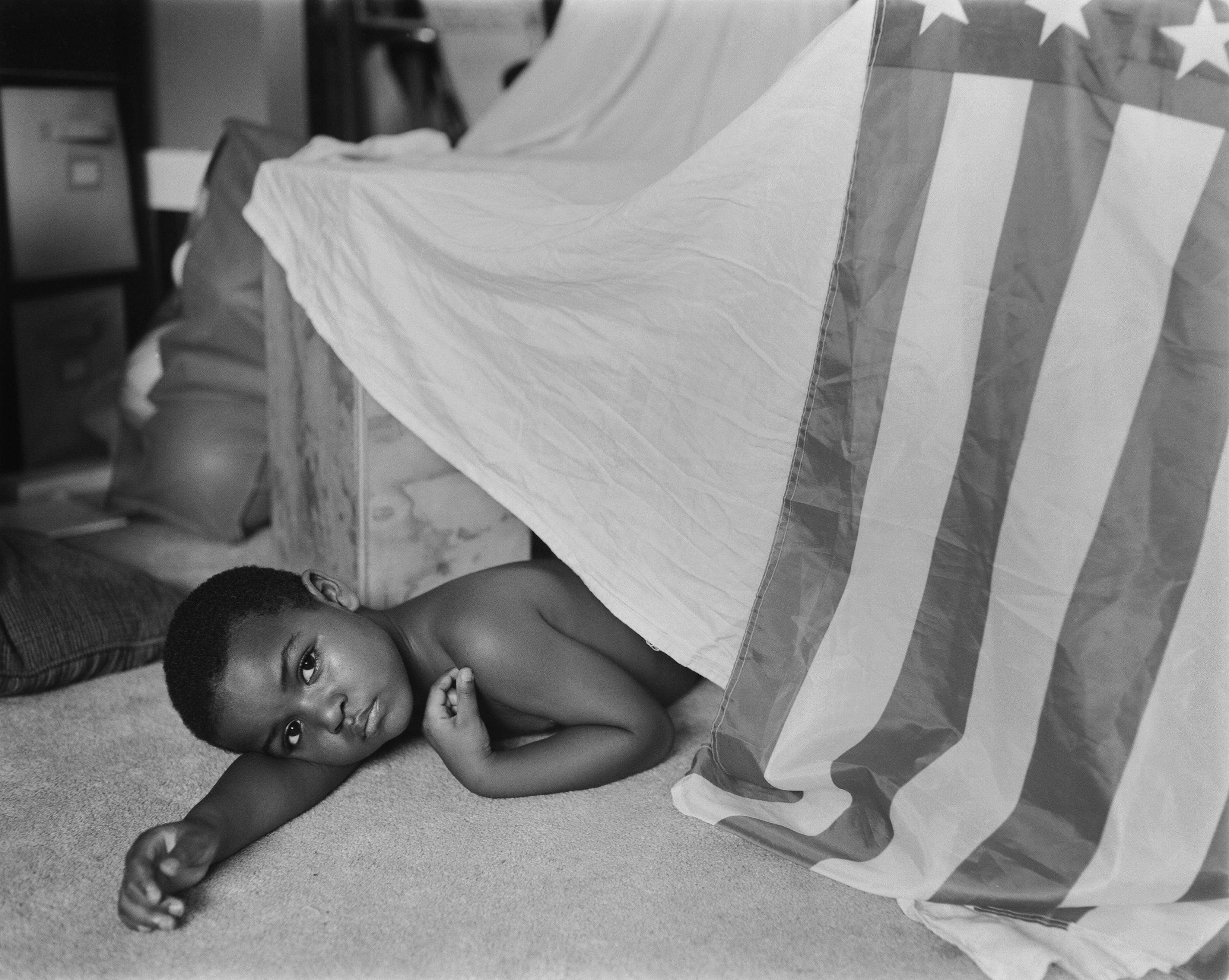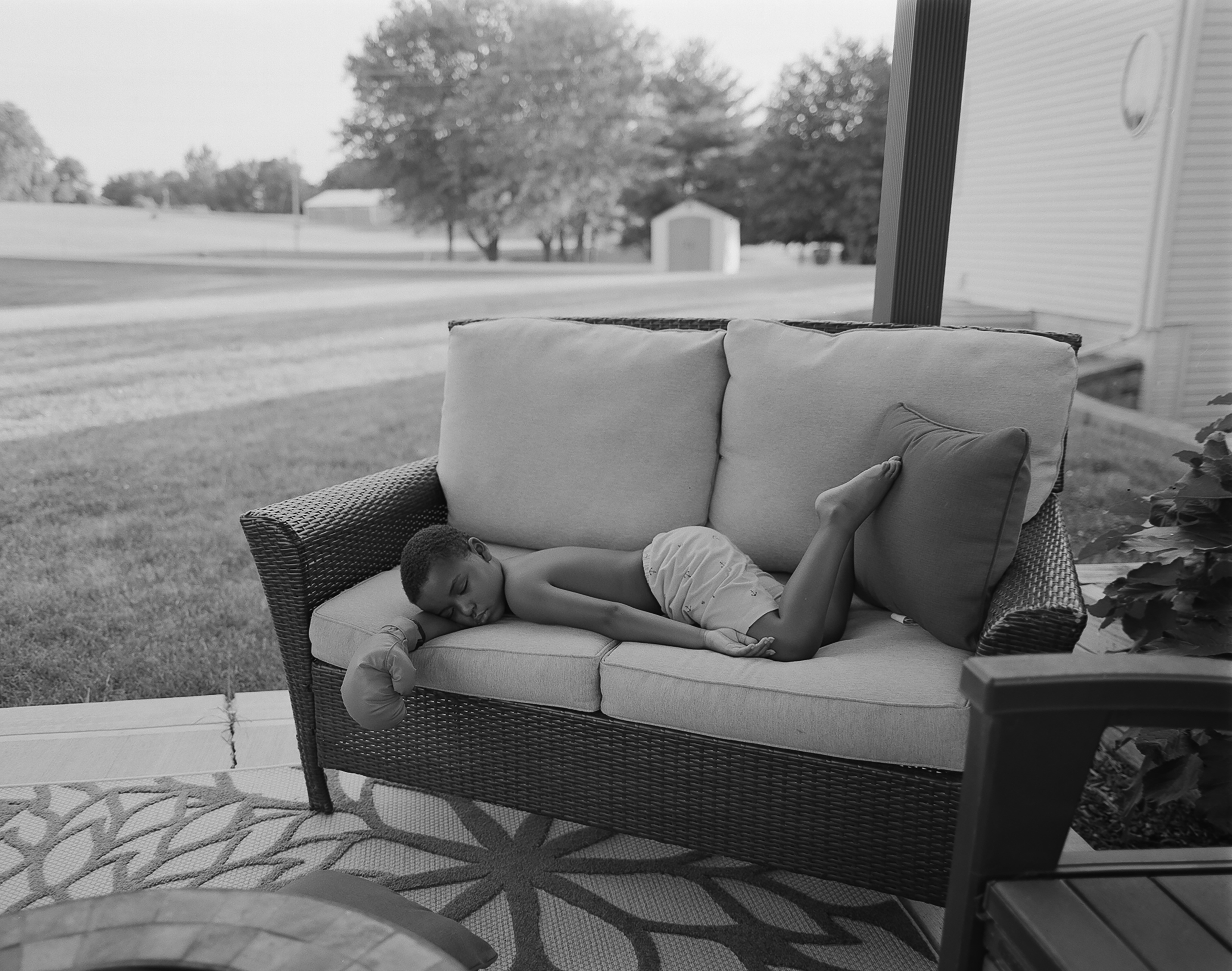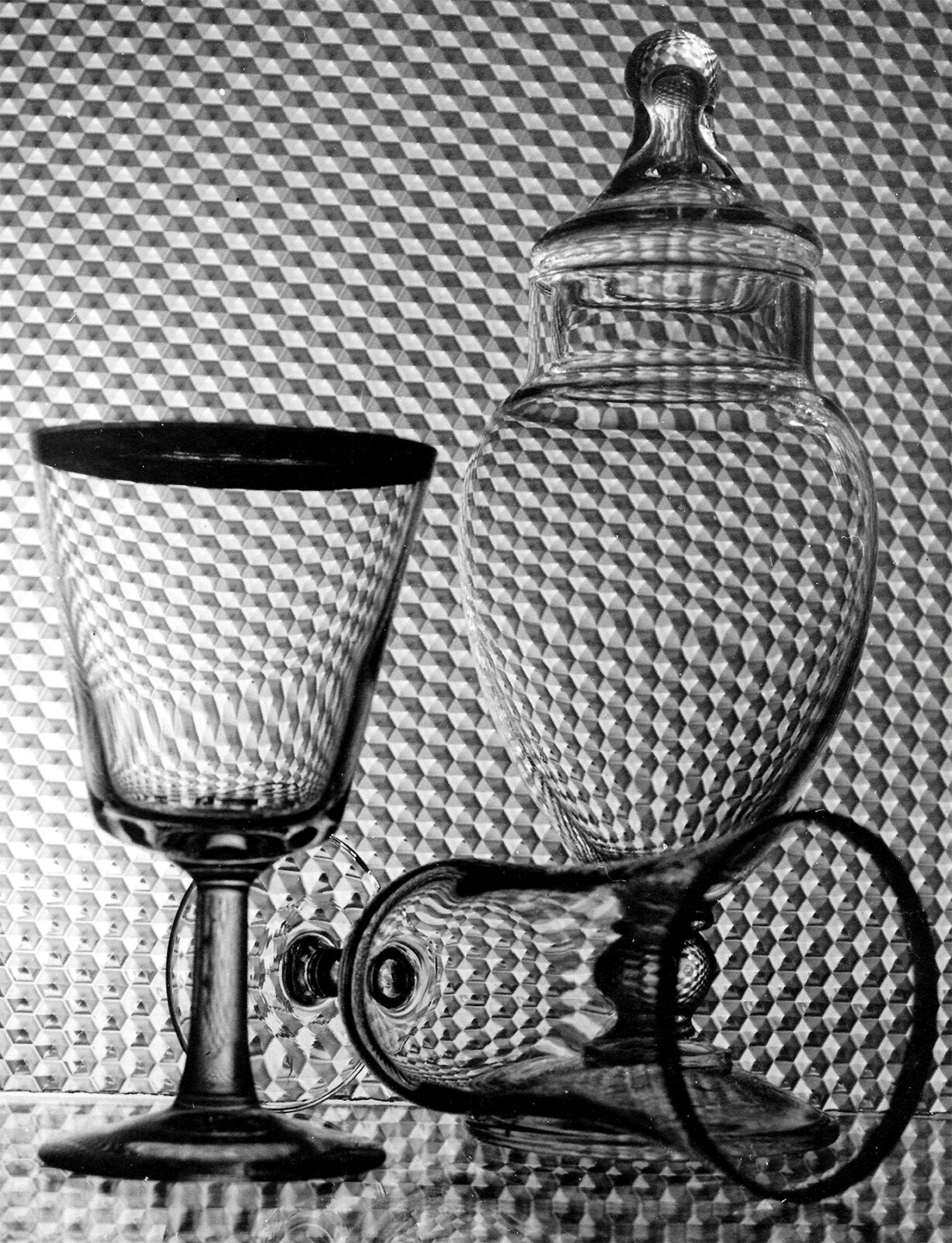
Kurt Markus, Photographer of Cowboys and Models, Is Dead at 75
He traveled the world and shot celebrities and fashion luminaries. But he never abandoned his roots in the open spaces of the American West.


Rashod Taylor at Obscura Gallery
Published May 21, 2022
Interview by Jean Dykstra for Photograph Magazine, AIPAD Photography Show Edition
Like many first-time fathers, Rashod Taylor began taking photographs of his son, LJ, when he was born. Eventually, though, he began to think there might be more to the photographs than family snapshots, and he began gently choreographing his (mostly) cooperative son in images that lovingly portray mundane moments from his life. The photographs, which sometimes include Taylor himself or his wife, are tender, intimate images of a Black family raising a Black boy in the United States. “It’s challenging,†says Taylor. Works from the series Little Black Boy are on view at Obscura Gallery’s booth at the AIPAD Photography Show, along with wet-plate collodion images from his series My America.
photograph: How did the series Little Black Boy get started?
Rashod Taylor: I had made pictures of my son for a while. I shot in film, and I’d look at the contact sheets, and I thought the work had something that other people could connect to. Being a Black man raising a Black boy today is challenging, and around this time, I thought about Tamir Rice, who was shot and killed by police, and George Floyd, and all of that made me want to use these images to say something a little bit more.
photograph: They’re beautiful images, and they have the detail and clarity that come from working with a 4×5 view camera. And they are images of tenderness and affection between a father and son, which we don’t see that much.
Taylor: People of color are often portrayed in the opposite light. For me it was important to give a spotlight to what that looks like – the tenderness and love, and how myself and my wife care for our son.

Rashod Taylor, LJ and His Fort, 2020. Courtesy the artist and Obscura Gallery
photograph: You’ve talked about the influence of Sally Mann. Are there other photographers who’ve influenced your work?
Taylor: Sally Mann is the most prominent photographer that focused on her family for so much of her career. Those images just looked so effortless, but she used an 8×10 view camera, so that’s even more of a labor of love. I like the humanity of Gordon Parks, how he talks about letting his pictures be his weapons against poverty and racism. I really take that to heart. I want people to engage with these images in a way that gets the conversation started: How come we don’t see more images of Black boys or Black girls being lifted up?
photograph: Was there a point where you began envisioning the photographs as something more than family photographs, as a project that engaged with themes of racial inequality and social justice and became part of that conversation?
Taylor: There’s a picture of LJ wearing a t-shirt that says Dream Big, but he also had a police officer badge on, and then in the background was this little white girl, and her back is to him. There’s so much going on in that image. A lightbulb kind of went off, and I thought: I think I might have something here.

Rashod Taylor, Tired of Fighting, 2020. Courtesy the artist and Obscura Gallery
photograph: Can you talk about your series My America? What made you decide to use the wet-plate collodion process, which is so labor intensive?
Taylor:  I got into wet plate about 10 years ago. I was getting burnt out with digital and wanted to get back to making tangible work with my hands. I saw some work by Joni Sternbach, and I really loved that. Then I took a workshop with Dale Bernstein, and I really I gravitated toward the process. I also enjoy history; understanding that this was the second photographic process after daguerreotypes, and looking at Civil War images and images of families, there wasn’t much representing Black people. It was expensive, and they couldn’t afford it. The few images of Black people were from the war. It was an interesting time: Black people were allowed to fight even though they had no rights. And that’s a theme in American history since then, into World War II, and Vietnam a little bit. So that was an interesting thread, and I love the fact that the wet plate dates back that far.
 Rashod Taylor, The Past, 2020. Courtesy the artist and Obscura Gallery
Rashod Taylor, The Past, 2020. Courtesy the artist and Obscura Gallery
FIND US AT THE NEW YORK CITY PHOTOGRAPHY SHOW PRESENTED BY AIPAD THIS MAY 19-20, 2022!
Center415
5th Avenue
New York, NY
As a proud member of AIPAD (Association of International Photography Art Dealers), we couldn’t be more excited to be back in bustling New York City this week celebrating photography after a long pandemic break. Now in its 41st edition, The Photography Show presented by AIPAD is the longest running and foremost exhibition dedicated to the photographic medium. In addition to the AIPAD Fair, the city is buzzing with other exciting art events including Frieze New York, VOLTA, I-54, and the ICP Photobook Fest in partnership with AIPAD.
In our AIPAD Booth #107 located on the ground floor at Center415, we are showcasing a selection of eight Obscura Gallery artists who represent a wide span in their individual careers, yet all have in common their unique contributions to the history of the medium. We hope you’ll stop by and visit our booth in which three of our artists will be available throughout the fair to chat with to you about their work: Susan Burnstine, Rania Matar, and Rashod Taylor.
Angie Brockey
Susan Burnstine
Paul Caponigro
Coco Fronsac
Colin Jones
Michael Massaia
Rania Matar
Rashod Taylor
We will also have a selection of fine 20th Century photography available including André Kertész, Edward Weston, Gertrude Käsebier, Imogen Cunningham, Gordon Parks, and many more!

VIEW THE WORKS IN OUR BOOTH ON ARTSY HERE.
Please inquire here for more information.

As part of Leica’s initiatives to expand diverse & inclusive representation in the photography industry, The Leica Women Foto Project is an ongoing commitment to elevating marginalized voices while empowering the female perspective.

Acclaimed Lebanese photographer and 2018 Guggenheim Fellow, Matar traveled to her home country to produce her stunning work-in-progress project Where Do I Go? لوين روظ inspired by the young generation of Lebanese women whose resilience and hope shine through the complexities of living in a country ill-prepared for COVID- 19 and ravaged by corruption and an ongoing financial crisis. As part of her larger initiative and best-selling photography book, SHE, Rania’s winning project explores issues of personal and collective identity through female adolescence and womanhood. A gripping and beautifully-shot examination of subjectivity and the female gaze, Matar portrays the raw beauty of her subjects: their age, individuality, physicality, and mystery, photographing them the way she, a woman and a mother, sees them, beautiful and alive.

Congratulations to Aline Smithson for being named a 2022 Hasselbald Heroine!
Hasselblad Heroines shines a light on talented female photographers from around the globe as they make their mark in the photographic industry. Through these spotlights, each Heroine shares their experiences in their career, challenges they’ve encountered in the industry and inspiration in their art through short video interviews.
By putting a spotlight on these creatives, Hasselblad Heroines hopes to encourage the next generation of female photographers to go against the grain and bring their creative visions to life.
Obscura Gallery is proud to have facilitated the 2nd Annual grant between one of our Obscura Gallery represented artists, Manuello Paganelli, and grantee Shayla Blatchford, a young Diné Documentary photographer based in Santa Fe, New Mexico.

The small grant contributes to Blatchford’s ongoing Anti-Uranium Mapping Project which is documenting stories by those impacted by uranium mining along with the 500 abandoned uranium mines on the Navajo Nation and from when nearly 30 million tons of uranium ore were extracted from Navajo lands between 1944 and 1986.

The destructive impact from mining toxic resources like uranium and coal has endangered the Reservation’s natural resources, and gravely impacted the people who lived and live here. Blatchford wants to bring awareness to the ongoing environmental catastrophe created by poorly run government projects and unchecked corporations, and to advocate for and preserve her Native heritage.

This interactive photo documentary map is very personal to me. It holds the story of my heritage and the stories of my own family facing the impacts of living near a coal mine. Ultimately, this project serves as historical documentation of the uranium mining era, from a Native perspective. – Shayla Blatchford

Growing up in Long Beach, California, Shayla had little exposure to her Native heritage; this sparked a curiosity that continues to propel her work today. Her mother’s genealogical investigation was a launching pad that started her journey to establish a connection with her ancestors and their ways of life. Often we don’t know how to share our stories. It can be difficult to take a vision from paper to finished project. Shayla has the ability to help people tell their stories, cultural or commercial, and sees providing that service as a way to share instances of beauty with the world. Photography is about capturing moments. It is about seeing the smallness in the bigness of the world. She wants to subtly craft these moments into art while allowing the images to speak with their voice and not her own.

While earning her BFA from Santa Fe University of Art & Design, Shayla’s primary focus was social documentary and photojournalism. Recently, her practice expanded to commercial photography for luxury product space Santa Fe Dry Goods, and fine art product photography for form & concept gallery, where she served as in-house photographer and creative director. Today, Shayla balances her time between freelance photography, ranging from portraiture to architectural and interior design photography, and her ongoing, major photo and storytelling series, The Anti-Uranium Mapping Project.
Donations directly help bring this project to life by covering costs for audio equipment and travel while in the field. If others want to contribute to Blatchford’s project, she has a Patreon page here in which to donate: https://www.patreon.com/shaylablatchford

About the Grantor:
Manuello Paganelli offers a small photojournalism grant each year to a deserving individual and for the second year in a row, he wanted to focus on giving the grant to a young Native American photojournalist based in New Mexico. In addition to the monetary grant, Paganelli and Obscura Gallery offer the grantees feedback and review of their portfolio as well as advising on the project. Last year in our grantee research we discovered Shayla Blatchford’s work and for this year’s grant we introduced her work to Paganelli who found it equally important work. The 2020 grant was given to Sharon Chischilly last year for her photographic work on the Navajo reservation during the Covid-19 pandemic.
Manuello Paganelli of Italian-Cuban descent, grew up in Santo Domingo, Italy and Puerto Rico. After a mentorship with Ansel Adams, he worked as a photojournalist at the Chattanooga Times. In 1989, he began to explore Cuba, its land, its people, and its complex relationship with the USA. The work culminated into his first photo book, Cuba a Personal Journey 1989-2015 and was published in 2016. In 1995, he had his first solo photo show of this work on Cuba and that same year earned him a fellowship grant. The Washington Post wrote “Manuello Paganelli’s Cuban photographs are a brilliant window on a land and people too long hidden from North American eyes. Working in the tradition of Cartier-Bresson and Robert Frank, Paganelli brings an artist’s eyes and a native son’s sensibility to his superb photographs.†In the early 1990s, he started work on his Black Cowboys series with a selection being featured at the Annenberg Space for Photography. In the summer of 2012, this same series was selected for the Photo Vernissage at the Manage Museum in St. Petersburg, Russia. His award-winning work has graced the covers and pages of many well-known magazines including GQ, LIFE, Bloomberg Business Week, Forbes, Newsweek, Men’s Journal, People, Time, Reader’s Digest, ESPN, Sports Illustrated and many more. Since 1996 Paganelli has been working on a documenatry across the Americas capturing indigenous people and their cultures.
Read more about Manuello Paganelli and view his work here:
https://obscuragallery.net/artwork/artists/manuello-paganelli/

Eight photographers and an iconic photographic institution will be honored this year:
Dawoud Bey, Fine Art Photographer
Larry Burrows, War Photojournalist
Philip-Lorca diCorcia, Fine Art Photographer
David Douglas Duncan, Photojournalist
Sally Mann, Fine Art Photographer
Pete Souza, Photojournalist, author,
and former Chief Official White House
Photographer for President Obama
Joyce Tenneson, Fine Art Photographer
Joel Sartore, Visionary Awards Winner
Professional Photographers of America,Leadership Award
THE LUCIE AWARDS
We congratulate Obscura Gallery artist Paul Caponigro for being the 2021 Lucie Award Honoree for the Lifetime Achievement in Fine Art Award!
The Lucie Awards is the premiere annual event honoring the greatest achievements in photography. The photography community from around the globe pays tribute to the most outstanding people in the field. Each year, the Lucie Advisory Board nominates deserving individuals across a variety of categories. Once these nominations have been received, an honoree in each category is selected. The Lucie Awards is the signature program of Lucie Foundation.
The honorees are presented with the Lucie statue during a spectacular evening at the Lucie Awards gala ceremony in New York. Â This year the Lucie Awards is held online October 26th, 2021.
Click here for more information.

Obscura is taking part in the virtual New York Antiques Show starting January 29 and on view through Sunday, January 31st 6:00pm MST. This show usually takes place at the Armory in NYC every year and is the largest antique show in the world.

Obscura Gallery is proud to have facilitated a grant between one of our Gallery artists we represent, Manuello Paganelli, and the grantee Sharon Chischilly, a young Native American Navajo student at University of New Mexico for her photographic work on the Navajo reservation during the Covid-19 pandemic.

Manuello Paganelli offers a small photojournalism grant each year to a deserving individual and this year he wanted to focus on giving the grant to a young Native American photojournalist. With University of New Mexico student Sharon Chischilly’s name on the forefront of our minds because of her incredible Covid-19 work showcased most recently in the New York Times, we shared her work with Paganelli and he was equally impressed.
“I received the name of Sharon Chischilly through Jennifer Schlesinger, the owner/curator of Obscura Gallery. From there I read a NYTimes article and saw the work she has been doing within her Native community on the heavy told Covid-19 has taken on them. I was quite impressed by the maturity, seriousness and depth of her work†– Manuello Paganelli
My name is Sharon Chischilly. I’m a junior at the University of New Mexico and a student photojournalist at the New Mexico Daily Lobo. I began my professional journalism career at the Daily Lobo in August of 2019, and since the pandemic started my work has been featured in the New York Times, Washington Post, Wall Street Journal, Getty Images, and more. I have been documenting the COVID-19 pandemic in the Navajo Nation since the first cases surfaced on the Navajo homeland in March. I would use this grant to start saving up for a second camera to help me document the scenes on the ground in my homeland.


Sharon Chischilly was born and raised in the Navajo Nation, an area that has been hit hard by the COVID-19 pandemic. Over the last six months, Chischilly’s photography has been featured in the Navajo Times, the New York Times, the Washington Post, the Wall Street Journal and other international outlets and as of November 16, she accepted a full-time position with The Navajo Times starting on November 23, 2020.

Sharon has also been photographing the Election 2020, and one of her videos has garnered over five million views on Twitter. Captured in Albuquerque, New Mexico, she was in the area photographing the community’s reaction to the election results when she caught sight of Ashkia “Kia†Randy as he left his car idling and jumped out onto Downtown Central Avenue to spontaneously perform a portion of a men’s northern traditional storytelling dance. Trujillo’s dance was part of a larger community celebration in honor of Joseph R. Biden Jr.’s defeat of Donald J. Trump in the 2020 presidential election. The dance is one that has been done for generations “to depict a successful hunt or a victorious battle†depending on the dancer, Trujillo said to the Daily Lobo in an interview. Sharon Chischilly captured the moment on video and posted it to her Instagram and Twitter accounts where the video had garnered 240,000 likes, over 34,000 retweets and more than 9,000 overwhelmingly positive comments. A number of verified Twitter users shared the video, including the rapper Common, Congresswoman Deb Haaland and actor and Indigenous rights activist Mark Ruffalo.
VIEW THE VIDEO HERE: https://twitter.com/Schischillyy/status/1325239287978233857
Manuello Paganelli of Italian-Cuban descent, grew up in Santo Domingo, Italy and Puerto Rico. After a mentorship with Ansel Adams, he worked as a photojournalist at the Chattanooga Times. In 1989, he began to explore Cuba, its land, its people, and its complex relationship with the USA. In 1995, he had his first solo photo show of his work on Cuba and that same year earned him a fellowship grant. The Washington Post wrote “Manuello Paganelli’s Cuban photographs are a brilliant window on a land and people too long hidden from North American eyes. Working in the tradition of Cartier-Bresson and Robert Frank, Paganelli brings an artist’s eyes and a native son’s sensibility to his superb photographs.â€
In the early 1990s, he started work on his Black Cowboys series with a selection being featured at the Annenberg Space for Photography. In the summer of 2012, this same series was selected for the Photo Vernissage at the Manage Museum in St. Petersburg, Russia. His award-winning work has graced the covers and pages of many well-known magazines including GQ, LIFE, Bloomberg Business Week, Forbes, Newsweek, Men’s Journal, People, Time, Reader’s Digest, ESPN, Sports Illustrated and many more.
Sharon Chischilly:
https://chischillyphotography.squarespace.com/
Manuello Paganelli:
https://obscuragallery.net/artwork/artists/manuello-paganelli/
Obscura Gallery
225 Delgado St.
Santa Fe, NM 87501
505-577-6708
info@obscuragallery.net




Member of the Association of International Photography Art Dealers
